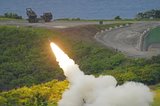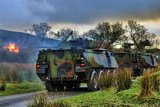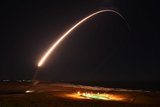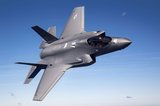China to raise defence spending by 7.5%, lower than 2018
China announced on 5 March 2019 a 7.5% increase in military spending in 2019, lower than last year as the country faces an economic slowdown, but still likely to make Asian neighbours nervous. It is working to provide the 2 million-strong People's Liberation Army (PLA) with state-of-the-art hardware, spending heavily on stealth warplanes, aircraft carriers and other weaponry.
Beijing has also stepped up its rhetoric against any independence movements in self-ruled Taiwan and continues to assert its vast territorial claims in the disputed South China Sea and East China Sea.
The government will spend ¥1.19 trillion ($177.6 billion) on defence in 2019, after it increased its outlay by 8.1% to ¥1.11 trillion in 2018, according to a government report presented at the start of the annual meeting of the National People's Congress (NPC).
Boasting the world's largest army, China's military spending is second only to the US, which budgeted $716 billion for defence in 2019. Beijing has not posted double-digit spending increases since 2015.
The Communist-led government will make ‘further efforts to ensure the political loyalty of the armed forces,’ Premier Li Keqiang said in a speech to the nearly 3,000 members of parliament, stressing the ‘absolute party leadership’ over the military. Li said the government will ‘strengthen military training under combat conditions, and firmly protect China's sovereignty, security, and development interests.’
The lower spending increase comes as the country's economy is slowing, with the government setting a lower growth target of 6.0-6.5%.
‘China's military expenditure is coordinated with annual Chinese GDP growth,’ said James Char, a military expert at Singapore's Nanyang Technological University. ‘China has other national priorities and an over-militarised national economy can deprive the government of much-needed resources, as what had happened to the former USSR,’ Char said.
No threat?
Chinese President Xi Jinping, who has vowed to turn the PLA into a ‘world class’ military by mid-century, has repeatedly called on the army to be combat-ready.
‘In Taiwan, you can legitimately worry about the Chinese budget increases, because they coincide with a more aggressive posture towards Taipei,’ said Barthelemy Courmont, Asia researcher at the Institute for Strategic and Foreign Relations in Paris.
China also faces competing claims in the South China Sea from Vietnam, the Philippines, Brunei, Malaysia and Taiwan. Beijing also has territorial dispute with historic rival Japan in the East China Sea.
But NPC spokesman Zhang Yesui said Monday China's military spending ‘doesn't pose a threat to other countries’" and is aimed at maintaining sovereignty and security.
High-tech PLA
The Communist Party has focussed on catching up with technology used by armed forces in the United States and western Europe. Premier Li said China will ‘speed up efforts to make innovations in defence-related science and technology.’
China has built a second aircraft carrier - its first domestically manufactured one - and has put it through sea trials in recent months as it prepares to put it into operation. Beijing is also building new generation destroyer vessels, fighter jets and ballistic missiles, while research is ongoing for the development of electromagnetic railguns and anti-satellite lasers.
Authorities, experts and state media say the PLA needs to improve the pay and living conditions of its troops.
Efforts to professionalise the army and make it ready for warfare require more military exercises, which mean more spending on munitions and fuel.
While Beijing's military spending lags behind the US, it still far surpasses that of other nations - in 2018, China spent more than twice as much as the third biggest spender, Saudi Arabia ($82.9 billion), and even more than Russia ($63.1 billion) and India ($57.9 billion), according to the International Institute for Strategic Studies (IISS).
More from Defence Notes
-
![How might European countries look to tackle drone incursions?]()
How might European countries look to tackle drone incursions?
Disruption of infrastructure in Europe, whether by cyberattack, physical damage to pipelines or uncrewed aerial vehicles flying over major airports, as has happened more recently, is on the rise. What is the most effective way of countering the aerial aspect of this not-so-open warfare?
-
![Taiwan approved for $11 billion weapon purchase from US]()
Taiwan approved for $11 billion weapon purchase from US
The US State Department’s approval of a multi-billion-dollar sale of weapons to Taiwan includes tactical mission networks equipment, uncrewed aerial systems, artillery rocket systems and self-propelled howitzers as well as anti-tank guided missiles.
-
![Ireland spells out $2.3 billion shopping list in five-year defence spending plan]()
Ireland spells out $2.3 billion shopping list in five-year defence spending plan
Ireland’s multi-annual investment in capital defence spending is set to rise from €300m in 2026 to €360m in 2029–2030 with major upgrades across land, air, maritime and cyber domains.
-
![Canada to deepen integration of multi-domain capabilities to strengthen its defences]()
Canada to deepen integration of multi-domain capabilities to strengthen its defences
The Canadian Department of National Defence has created new organisations to manage the procurement and integration of all-domain solutions and allocated US$258.33 million to strengthen production capacities.
-
![US National Security Strategy prioritises advanced military capabilities and national industry]()
US National Security Strategy prioritises advanced military capabilities and national industry
The 2025 NSS has emphasised investment in the US nuclear and air defence inventory and national industry, but it leaves multiple unanswered questions on how the White House will implement this approach.
-
![Canada set to look away from its neighbour and across the Atlantic for partners]()
Canada set to look away from its neighbour and across the Atlantic for partners
While non-EU UK struggles to join the Security Action for Europe initiative, which provides loans for defence programmes, Canada has become the first country outside Europe to get access – and did so for a nominal fee.
























